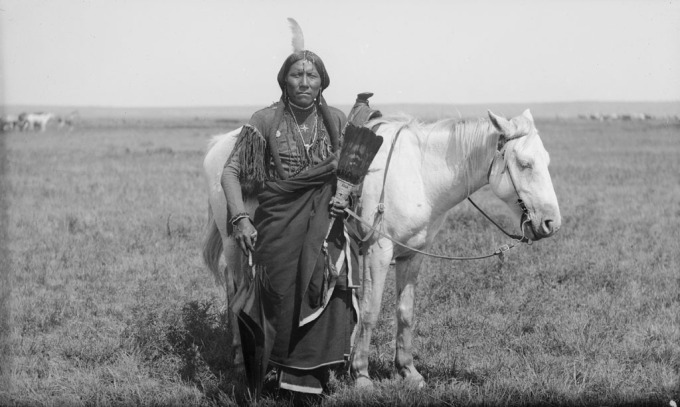
 As a student of American Indian history (in the Southeast), I have been asked more than once whether I’ve read this popular book. I’m no expert on the Comanches and only have a general acquaintance with the Great Plains nations. But I do have an in-depth understanding of how challenging it is to write the history of a people whose records were kept by their conquerors. Knowing how much better Indian histories have become in recent years, I came to Empire of the Summer Moon with high hopes. But my first scout through the pages, including a long camp in the bibliography, showed me a history as dead and barren as Ezekiel’s plain of dry bones. Reading the book is like having the ghosts of cavalrymen and settlers rise up to harangue us about the bloody deeds of “wild Indians,” while Indian ghosts remain quiet in their unmarked graves.
As a student of American Indian history (in the Southeast), I have been asked more than once whether I’ve read this popular book. I’m no expert on the Comanches and only have a general acquaintance with the Great Plains nations. But I do have an in-depth understanding of how challenging it is to write the history of a people whose records were kept by their conquerors. Knowing how much better Indian histories have become in recent years, I came to Empire of the Summer Moon with high hopes. But my first scout through the pages, including a long camp in the bibliography, showed me a history as dead and barren as Ezekiel’s plain of dry bones. Reading the book is like having the ghosts of cavalrymen and settlers rise up to harangue us about the bloody deeds of “wild Indians,” while Indian ghosts remain quiet in their unmarked graves.
This old-fashioned western history pits civilized white people against savage redmen in a bloody contest for control of land. The contest is a racial one and the outcome is inevitable. Because race explains so much, the book dwells with fascination on the “white squaw” Cynthia Ann Parker and her “mixed-blood” son, Quanah. The Comanches as a whole are treated, not as a nation with a history and culture, but as a body of fierce, “primitive” horseback warriors with women and children stowed back at camp under tepees. Because they are so primitive, the Comanches have no history: the way they lived in the 1800s is assumed to be the way they had always lived, and the only way they ever could live.
A good counterpoint to this book would be Comanche author Paul Chaat Smith’s funny and insightful Everything You Know About Indians Is Wrong. It’s too bad Sam Gwynne didn’t have a chance to read it before he embarked on Empire of the Summer Moon. Maybe it would have made a difference. Continue reading “Book review: Empire of the Summer Moon”



 One of the Indian phrases we white folks like to throw around now and again is the name “Long Man” or “Long Person” for a river. We tend to do this with the idea that Indians had some “primitive” idea of the river as a god of some kind. The fact is, the name and idea of a “Long Man” only occurred in some Indian cultures, in specific contexts.
One of the Indian phrases we white folks like to throw around now and again is the name “Long Man” or “Long Person” for a river. We tend to do this with the idea that Indians had some “primitive” idea of the river as a god of some kind. The fact is, the name and idea of a “Long Man” only occurred in some Indian cultures, in specific contexts. 